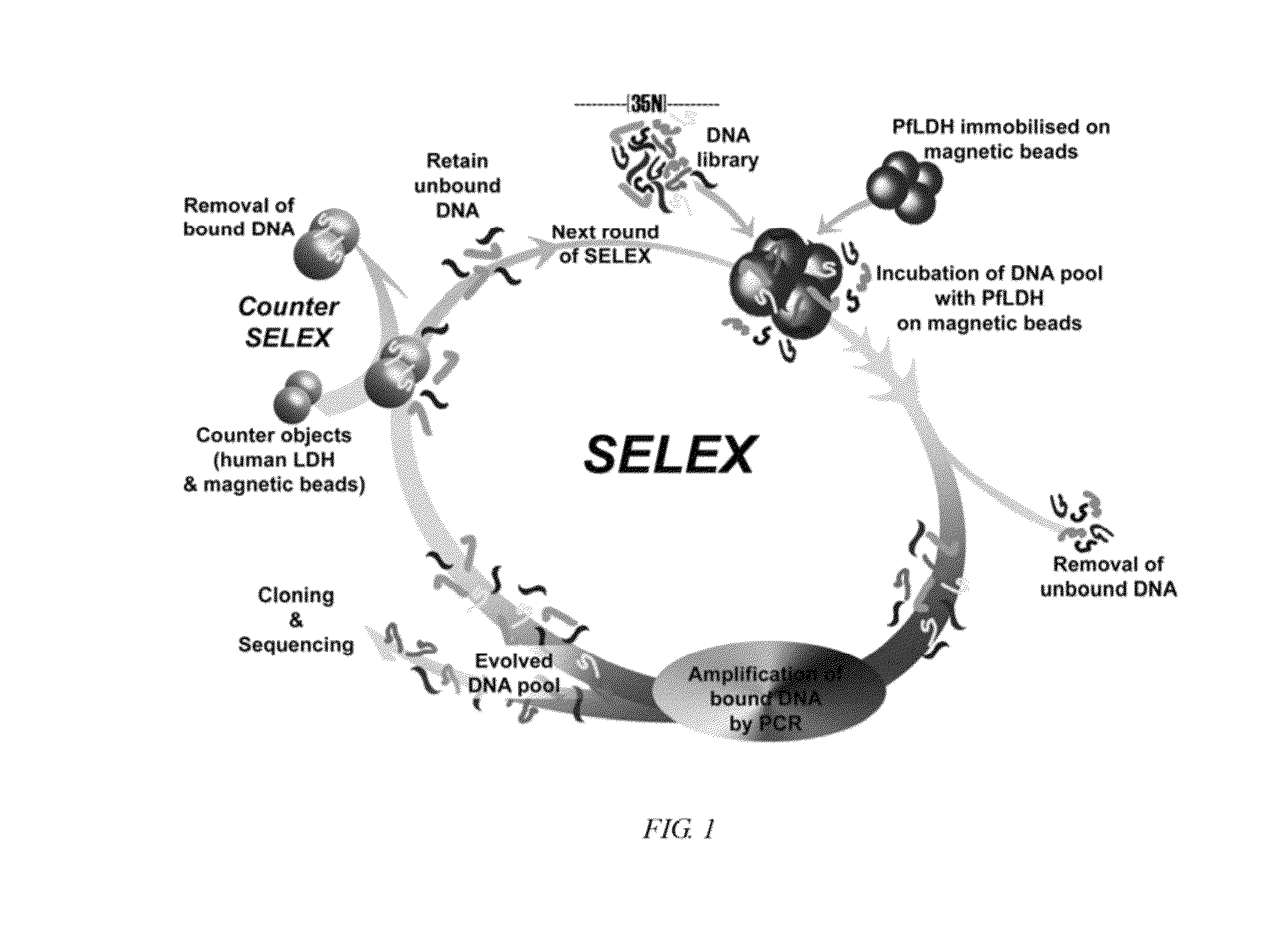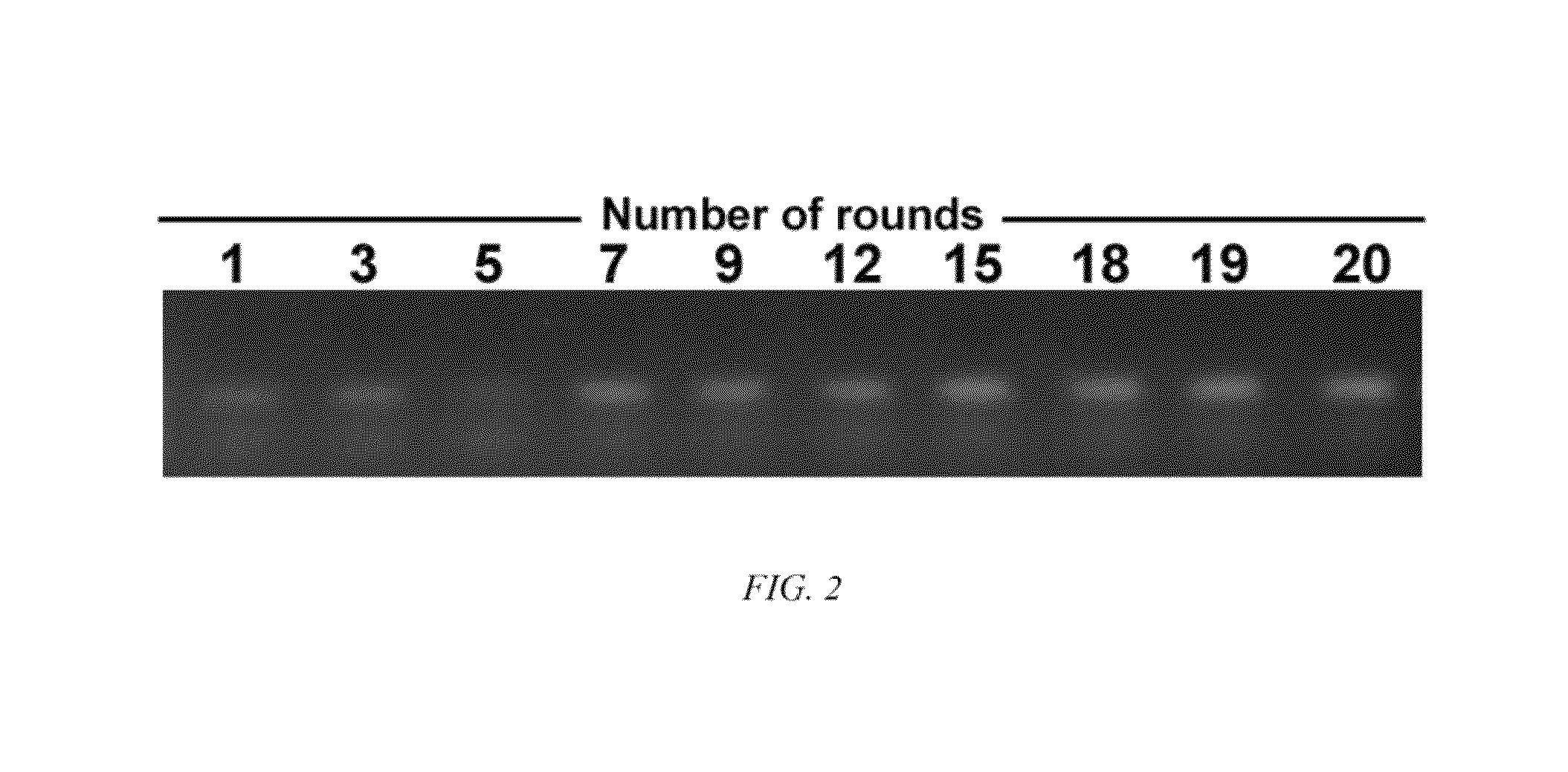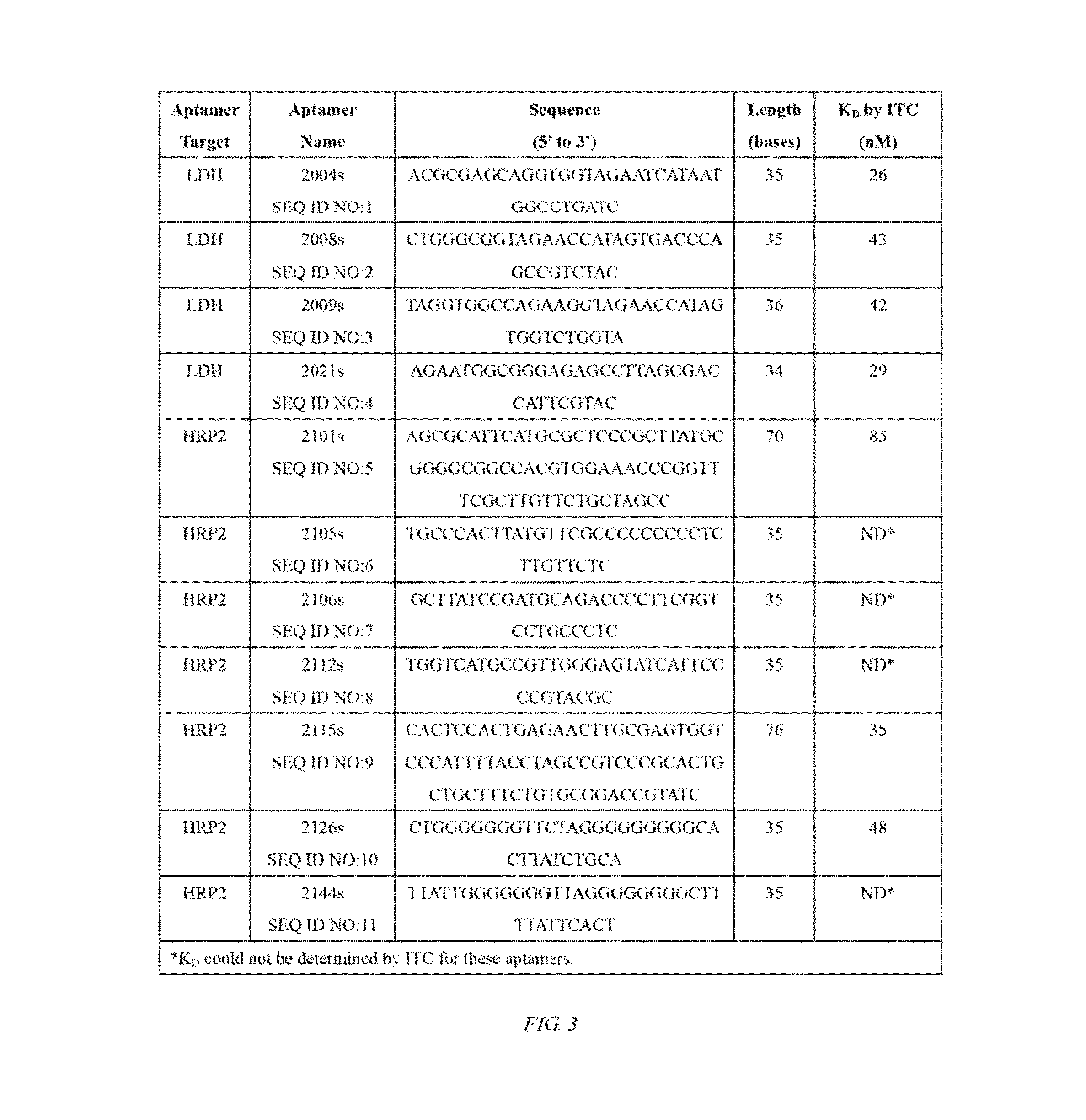Nucleic acid aptamers against plasmodium lactate dehydrogenase and histidine-rich protein II and uses thereof for malaria diagnosis
a technology of which is applied in the field of nucleic acid aptamers against plasmodium lactate dehydrogenase and histidine-rich protein ii and its use for malaria diagnosis, can solve the problems of malaria having a negative impact on the wealth of nations and individuals, the most dangerous form of malaria with the highest mortality rate, and the death of nearly one million peopl
- Summary
- Abstract
- Description
- Claims
- Application Information
AI Technical Summary
Benefits of technology
Problems solved by technology
Method used
Image
Examples
example 1
Properties of Aptamers that Bind to Plasmodium LDH and HRPII
[0108]The thermodynamics of the interaction between the claimed aptamers and their targets were studied by using isothermal titration calorimetry. As shown in FIGS. 4-8, the aptamers claimed were observed to specifically bind with nanomolar affinity (Kd) to their targets without binding to controls.
[0109]In the upper panel of FIG. 5, an exothermic heat pulse was observed after each injection of 2004s to PfLDH solution. Using a single site binding model to fit the data then the result shows the stoichiometry of the 2004s-PfLDH complex is 0.152±0.003 sites, which indicates more than one 2004s may bind per PfLDH molecule in solution at 25° C.
[0110]In the upper panel of FIG. 6, an exothermic heat pulse was observed after each injection of 2008s to PfLDH solution. Using a single site binding model to fit the data then the result shows the stoichiometry of 2008s-PfLDH complex is 0.166±0.003 sites, which indicates more than one 20...
example 2
Structural Basis of DNA Aptamer Recognition of Plasmodium Lactate Dehydrogenase
[0123]This Example shows the crystal structure and application of one embodiment of a DNA aptamer against a malaria panspecies diagnostic target, Plasmodium falciparum lactate dehydrogenase (PfLDH). This example also shows a new mechanism of molecular recognition of Plasmodium falciparum lactate dehydrogenase (PfLDH) by the hairpin DNA aptamer of the present invention.
[0124]PfLDH and two related human homologues hLDHA1 and hLDHB were cloned, expressed in E. coli and purified. DNA aptamers were selected from a pool with a 35-base random region against purified PfLDH and counterselected to remove aptamers bound to the closely related human homologues hLDHA1 and hLDHB. After 20 rounds of selection, 51 sequences were obtained and aligned, revealing the presence of conserved sequence signatures and motifs. A number of these aptamers were observed to specifically bind to PfLDH (the most promising with Kd in the...
PUM
| Property | Measurement | Unit |
|---|---|---|
| average molecular weight | aaaaa | aaaaa |
| pH | aaaaa | aaaaa |
| pH | aaaaa | aaaaa |
Abstract
Description
Claims
Application Information
 Login to View More
Login to View More - R&D
- Intellectual Property
- Life Sciences
- Materials
- Tech Scout
- Unparalleled Data Quality
- Higher Quality Content
- 60% Fewer Hallucinations
Browse by: Latest US Patents, China's latest patents, Technical Efficacy Thesaurus, Application Domain, Technology Topic, Popular Technical Reports.
© 2025 PatSnap. All rights reserved.Legal|Privacy policy|Modern Slavery Act Transparency Statement|Sitemap|About US| Contact US: help@patsnap.com



